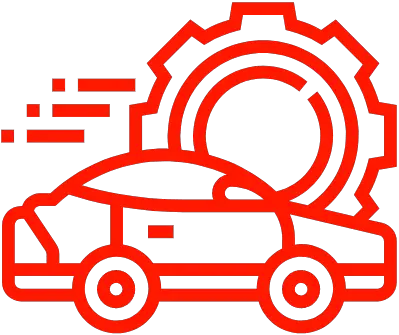Understanding the Power Steering and Traction Control Light On
Power steering and traction control light on is an indication that there is an issue with either the power steering system or the traction control system of a vehicle. The power steering system helps the driver to maneuver the vehicle more easily by reducing the amount of effort needed to turn the steering wheel. The traction control system helps keep the vehicle from skidding or sliding on slippery surfaces by automatically applying brakes to individual wheels when needed. When either of these systems has a problem, it will activate a warning light on the dashboard, alerting the driver that there is a fault in one of these systems. If this warning light appears, it is important to have the vehicle inspected and serviced as soon as possible in order to prevent further damage or safety risks.
Automobile: Power Steering and Traction Control Light On
Overview
Power steering is an automotive feature that allows the driver to steer the vehicle with minimal effort. This is achieved through the use of a hydraulic or electric motor that assists in turning the wheels. The system works by using sensors to detect how much force is being applied to the steering wheel and then adjusting the amount of power being used to turn the wheels accordingly. Traction control is a feature that helps reduce wheel spin when accelerating, thus increasing traction on slippery surfaces. It works by applying brakes to certain wheels or reducing engine power when it senses wheel spin.
Common Causes of Power Steering and Traction Control Lights Coming On
Electrical issues are one of the most common causes of power steering and traction control lights coming on in automobiles. Low battery voltage or a malfunctioning alternator can cause these lights to come on as they can reduce the amount of electrical energy available for these systems. In addition, mechanical problems such as leaking fluid or faulty components can also lead to these lights being illuminated. Finally, computer issues such as corrupt software programs or poor electrical connectors can also cause these lights to come on in vehicles.
How to Diagnose Power Steering and Traction Control Lights
The best way to diagnose power steering and traction control lights is by using an OBD scanner. This device plugs into your car’s diagnostic port and allows you to read codes that may be causing these lights to come on. Once you have read the codes, you can then interpret them by referring to an OBD manual for your specific car model. This will help you pinpoint any issues with your vehicle’s power steering or traction control system so that you can make repairs accordingly.
Physical Examination of Vehicle Components
When it comes to inspecting your vehicle’s power steering and traction control system, it’s important to understand the components that make up the system. The first step is to check the fluid levels and check for any leaks. This involves checking the power steering fluid reservoir and making sure that it is full, as well as checking all of the hoses and component connectors for any signs of leaking fluid. It’s also important to inspect the wiring harnesses and electrical connectors, as these can be a source of intermittent problems.
Troubleshooting Power Steering and Traction Control Lights at Home
If you’re having trouble with your power steering and traction control lights, there are a few things you can do at home to try and troubleshoot the issue. First, check your fluid levels. Make sure that the power steering fluid reservoir is full, and check for any signs of leaking hoses or component connectors. Next, check your battery voltage with a meter to ensure that there isn’t a low voltage issue causing your lights to come on. If all else fails, you may need to jump start a flat battery in order to get your power steering and traction control lights back on track.
Professional Repairs for Power Steering & Traction Control Lights
If you find yourself unable to troubleshoot the issue at home, then it may be time to seek professional assistance with repairing your power steering or traction control lights. Depending on what components need replacing, you may need some specific parts in order to complete the job correctly – so make sure you locate quality replacement parts before starting any repairs. You should also pay attention when installing new wiring harnesses or electrical connectors; ensure that they are correctly installed so as not to cause further issues down the line.
Common Symptoms of Malfunctioning Power Steering & Traction Control Systems
There are certain common symptoms which can indicate when something is wrong with your power steering or traction control system; these include hesitation when turning or responding slowly when accelerating or braking. You might also notice increased vibrations when driving in wet conditions, or an overall decrease in performance due to worn-out parts or incorrect tension on belts or components. It’s important that you stay vigilant for any signs of malfunctioning in order to prevent further problems from arising down the line.
FAQ & Answers
Q: How does power steering work?
A: Power steering uses hydraulic pressure which is generated by the power steering pump in order to assist the driver in turning the vehicle’s wheels. The hydraulic pressure is then used to push or pull the steering rack, which is connected to the vehicle’s wheels and allows for smoother and easier turning.
Q: What is traction control?
A: Traction control is an electronic system that helps improve a vehicle’s handling and stability by limiting wheel spin when accelerating. It works by detecting when one of the wheels is spinning faster than the others, and then applies braking to that wheel in order to reduce wheel spin and maintain better control of the vehicle.
Q: What are common causes of power steering and traction control lights coming on?
A: Common causes of power steering and traction control lights coming on include electrical issues such as low battery voltage or malfunctioning alternators, mechanical problems such as leaking fluid or faulty components, and computer issues such as corrupt software programmes or poor electrical connectors.
Q: How can I diagnose power steering and traction control lights?
A: You can diagnose power steering and traction control lights using an OBD scanner, which will provide step-by-step instructions for using it as well as interpreting its results. You can also physically examine components such as checking fluid levels and leaks, inspecting wiring harnesses, and electrical connectors.
Q: What are common symptoms of malfunctioning power steering & traction control systems?
A: Common symptoms of malfunctioning power steering & traction control systems include difficulty turning the wheel while driving, a grinding noise while turning corners or accelerating, decreased responsiveness from the pedals or throttle while driving, increased vibration while driving at high speeds or on rough terrain, noticeable delay when shifting gears, or a sudden decrease in fuel economy.
In conclusion, power steering and traction control light can be very useful in keeping a vehicle in optimal condition and ensuring the safety of drivers. Knowing what these lights mean and how to address any issues that they may indicate is important for all drivers. By doing so, they will be able to enjoy a safer, smoother ride with fewer risks.
Author Profile

-
With more than 30 years in the bicycle industry, I have a strong background in bicycle retailing, sales, marketing and customer service. I have a passion for cycling and a dedication to excellence. As a manager, I worked diligently to increase my capabilities and responsibilities, managing up to eleven mechanics (at Palo Alto Bicycles) and later as a working partner in my own store.
As the shop owner of Spoke n’ Word Cycles in Socorro, NM, the success of the mission was my responsibility, which I pursued passionately since we opened in 2003 through the spring of 2011. I am adept at managing owned and loan inventory, preparing weekly & annual inventory statements, and managing staff. The role as managing partner also allowed me tremendous freedom. I used this personal freedom to become more deeply involved in my own advancement as a mechanic, to spearhead local trail building, and advocating for cycling both locally and regionally.
As a mechanic, I have several years doing neutral support, experience as a team mechanic, and experience supporting local rides, races, club events. I consistently strive to ensure that bicycles function flawlessly by foreseeing issues and working with the riders, soigners, coaches and other mechanics. Even with decades of experience as a shop mechanic and team mechanic, and continue to pursue greater involvement in this sport as a US Pro Mechanic, and UCI Pro Mechanic.
Latest entries
- July 26, 2023BodyFind the Best Grill for Your 2007 Toyota Tacoma – A Complete Guide
- July 26, 2023BodyUpgrade Your Ford Escape with the Best 2008 Grill – Here’s How!
- July 26, 2023Bumper Stickers, Decals And MagnetsBest Chevy 1500 Door Emblem: Upgrade Your Truck with a Stylish Emblem
- July 26, 2023Marker Light AssembliesGive Your 2008 Dodge Dakota a Makeover with the Best Grill Upgrade
